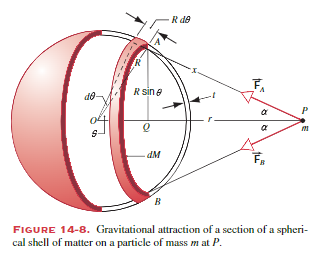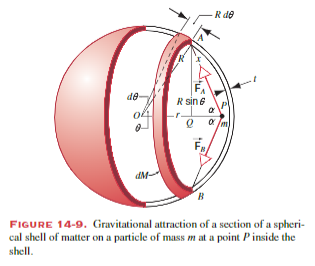Oftentimes we can use the two shell theorems to simply the analysis of forces following an Inverse Square Law. The shell theorems state:
Shell Theorem 1:
A uniformly dense spherical shell attracts an external particle as if all the mass of the shell were concentrated at its center.
Shell Theorem 2:
A uniformly dense spherical shell exerts no gravitational force on a particle located anywhere inside it.
Proof of the Shell Theorems:

Lets use the gravitational force for this example.
We have a shell of total mass
We also have a very very thin ring of width
For an element of mass
For extending this for every mass element in the ring:
Getting the volume from the mass, then using it to find total mass:
- The ring has dimensions
is the circumference of the ring.
Lets plug this into our equation for
Using law of cosines for triangle
Which we differentiate for
We can also take law of cosines with
Substituting these into the equation for
To get the total force, take the integral:
Where
When we apply the method method above for

As a result, when you take the integral from the inside of the shell, the result will be zero, proving shell theorem 2.